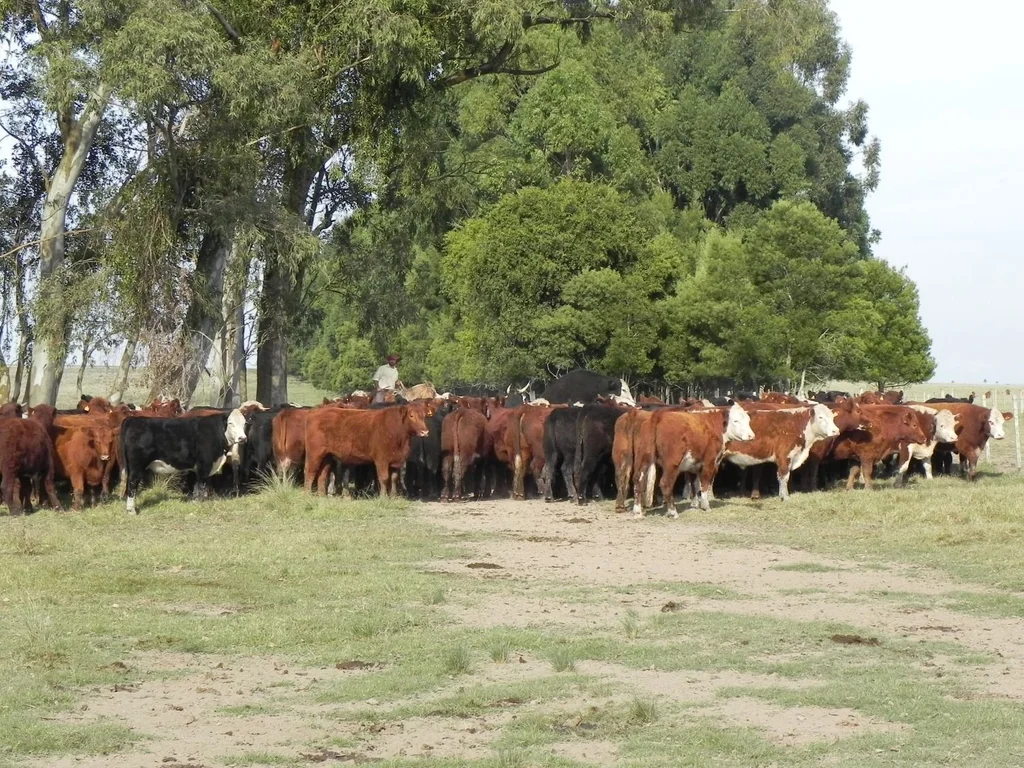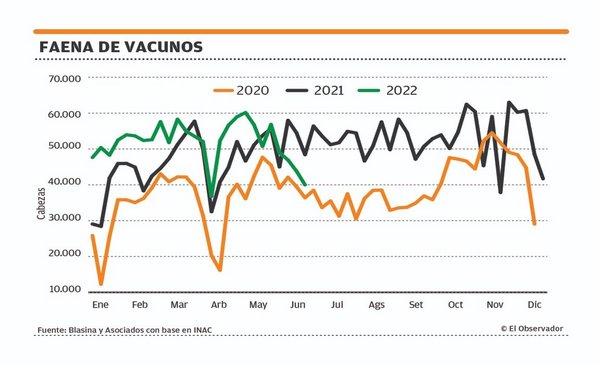Very few operations by farms have materialized in the last weekafter the drop in values proposed by the industry. An offer that was already very low was withdrawn and, together with the temporary closure of some plants, it is expected that the drop in work will deepen in the coming weeks.
There are practically no special well-finished cattle. And those that exist are not for sale. There is a tug-of-war between supply and demand, and a formed market is still not in sight, consignees consulted agreed.
There was some additional downward adjustment and practically no refrigerator offers the US$ 5.30 per kilo on the fourth scale that was found last week. The price position varies between plants, depending on their slaughter needs. In some there are still kosher teams working and that generates an additional demand for special steers.
The price range for tip steers, with a good finish, goes from US$5.10 to US$5.25. And for the cow, between US$4.80 and US$4.95.
Forage availability is generally restricted. “The green ones don’t walk”, said an operator. “The cattle was not going to appear with a higher price, it is a matter of lack of raw material,” said Pablo Sánchez, Walter Hugo Abelenda desk officer and member of the board of the Association of Livestock Consignees (ACG).
It is not yet clear what the operations will be like next week, if the cancellation will end up being validated or not.
Yes, it is a fact that the slaughter will fall, with several plants that gave licenses and are not operating. Last week was 39,987 cattle, its second lowest record of the year, marking a weekly drop of 9% and 25% less than the same week last year.
June closed at 207,091 slaughtered heads, the first year-on-year decrease since September 2020. And it marked a drop of almost 13% compared to the 237,354 cattle registered in June of last year.
Despite this slackening in the market, the rains eased production fears, and livestock shows structural strength.
This was reflected in the auction of Lot 21 this week. Calves averaged $2.91, just down from $2.93 in the previous auction, and still 30% above last year’s prices.
In males, the closest businesses were awarded. In females, everything went up.
EO
For now, the export price for beef has shown a moderate adjustment and remains above $5,000 per ton. It went from US$ 5,487 registered in May – the monthly historical maximum – to an average of US$ 5,241 in June, a drop of 4.5%.
In the annual accumulated, the gap of 30% is maintained compared to 2021, with an average of US$ 5,132 per ton in 2022 compared to US$ 3,960 in the same period last year, according to provisional data from the National Meat Institute ( INAC).
In the sheep market, there is little supply as is typical of the time, without many movements but with firm values. In some categories the references have remained, such as lamb, at over US$4.54 per kilo and capons at US$4.20. Other categories have registered rises, such as sheep, at US$4.63 and sheep at US$4.17.
For sheep meat, the fall in exports to China is accentuated and a rebound in Brazil is confirmed. In price, throughout the year the values have shown a plateau above US$5,200 (more precisely US$5,208) per ton, an interannual improvement of 7%.
In the world, attention is on Australia. Concerns grow about the proximity of foot-and-mouth disease with thousands of cases registered in Indonesia. Australian authorities have increased biosecurity measures at airports this week, after outbreaks were detected in Bali. The great risk is the possible entry of the disease through Australian tourists returning from that destination.

john samuel
The availability of forage is very affected.







